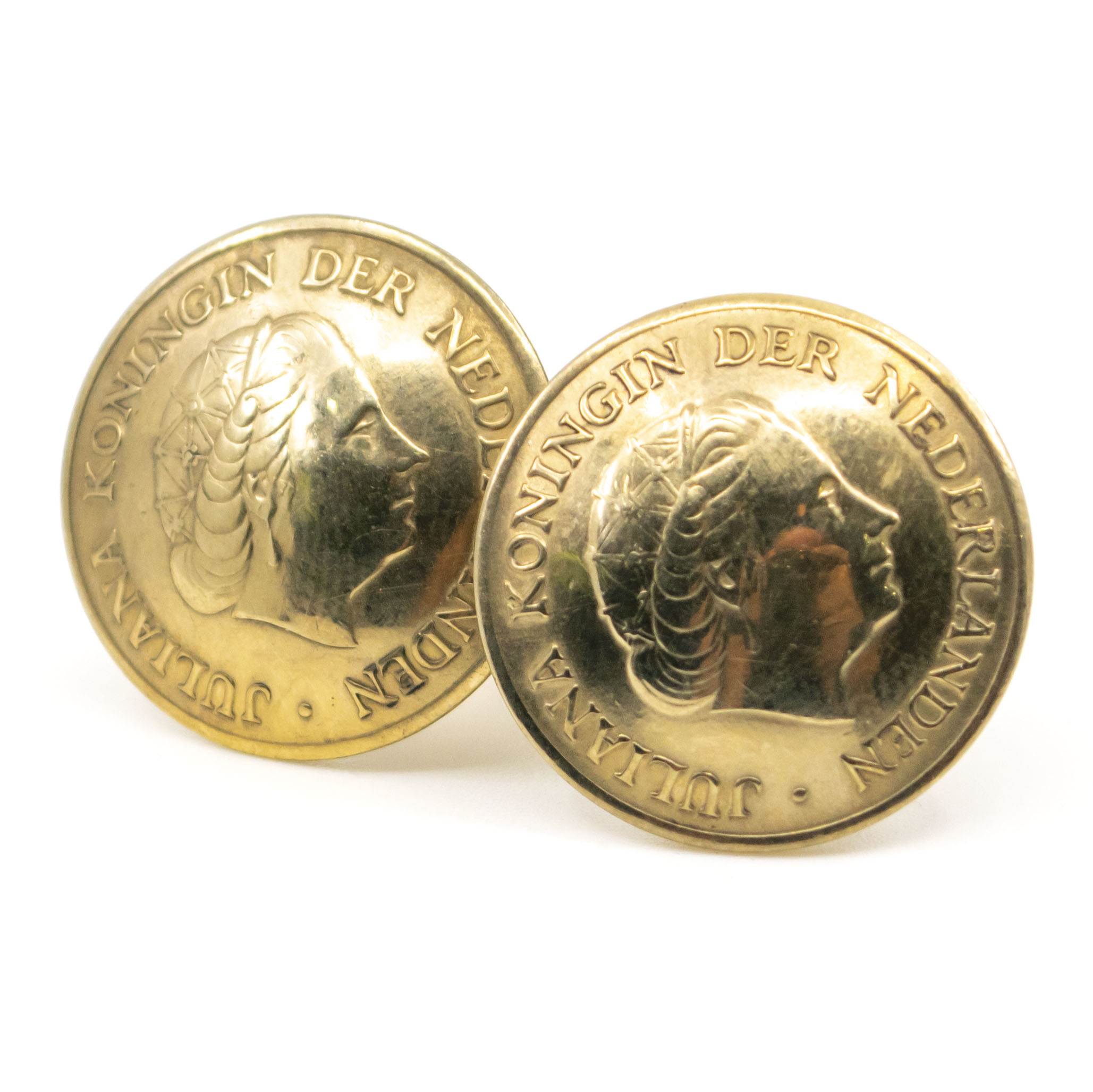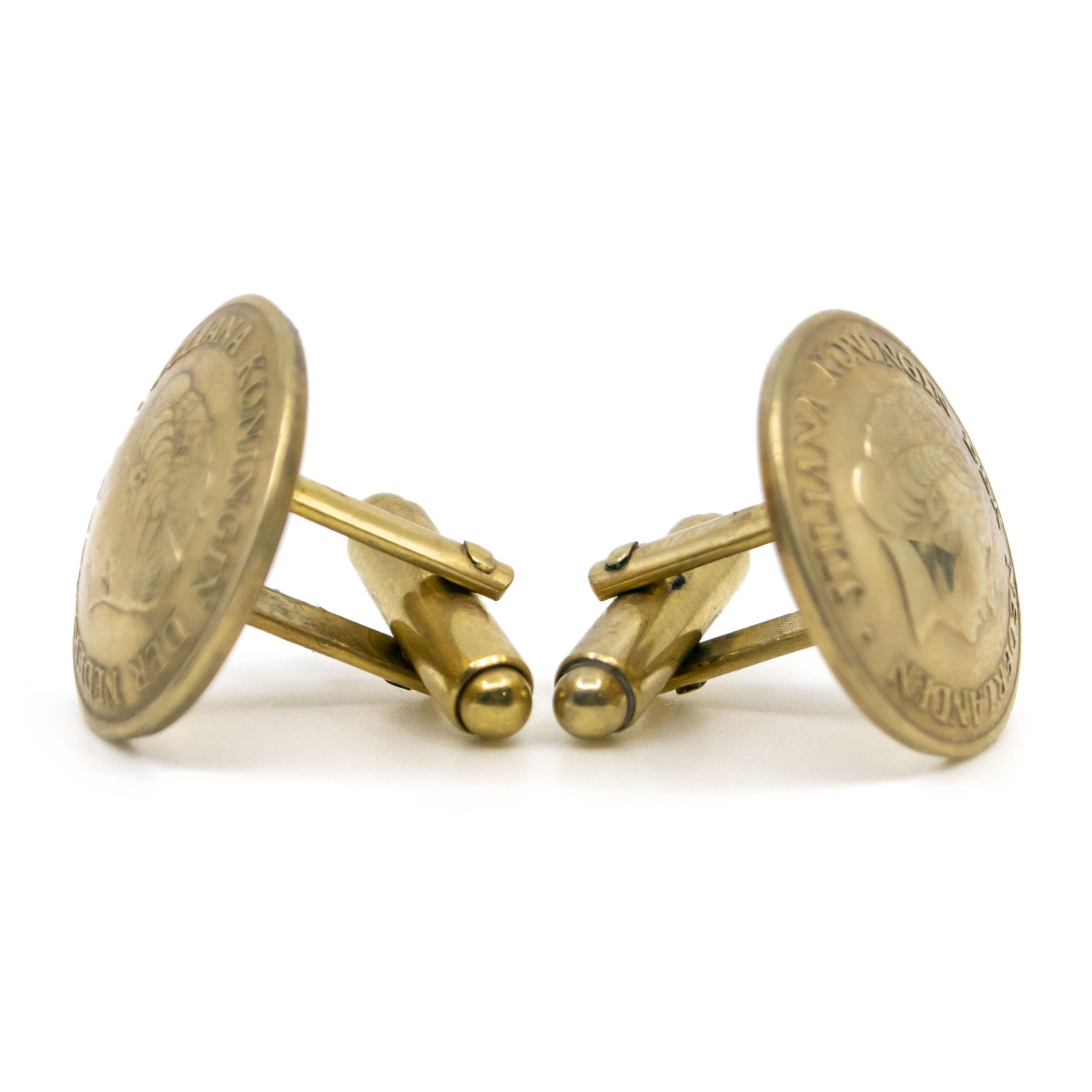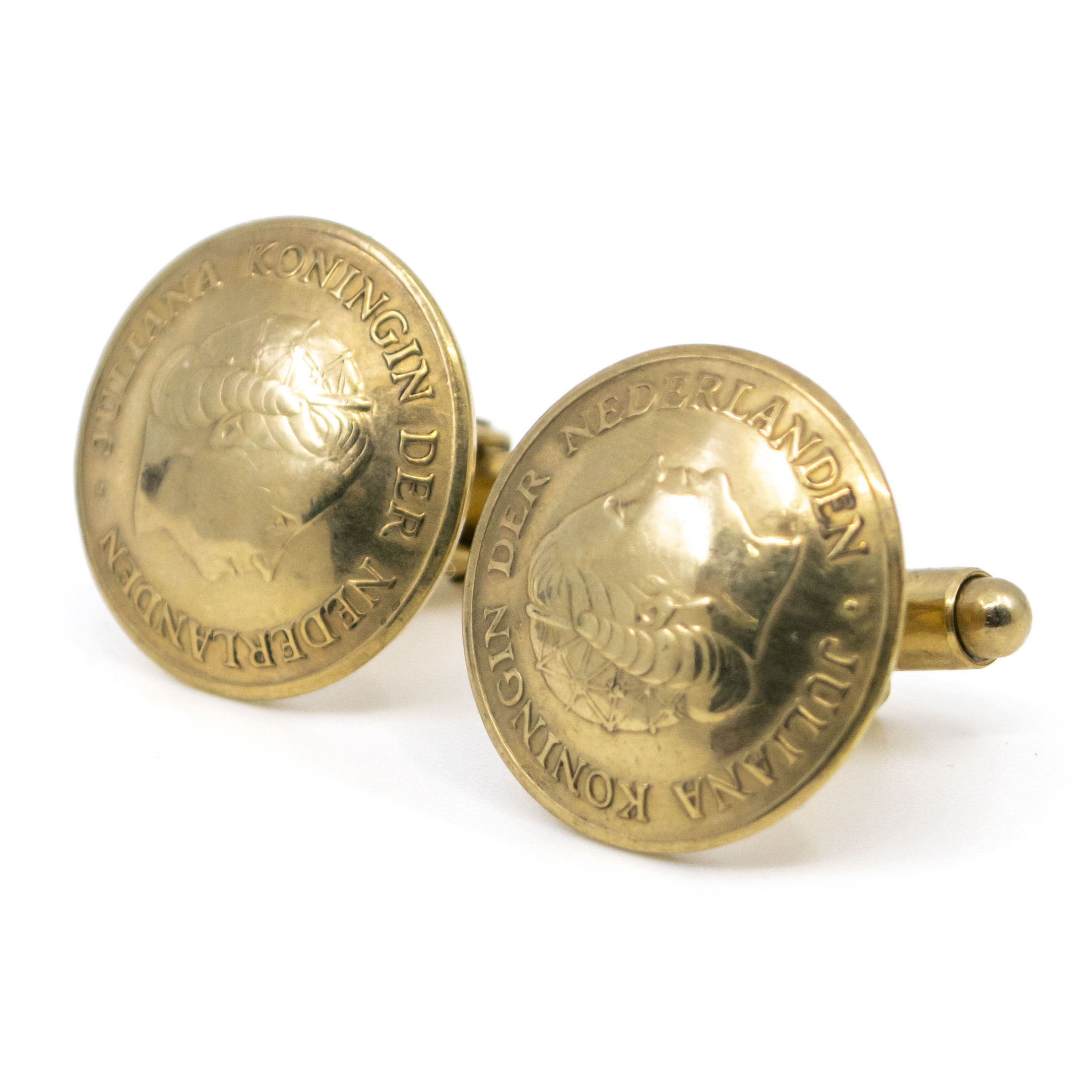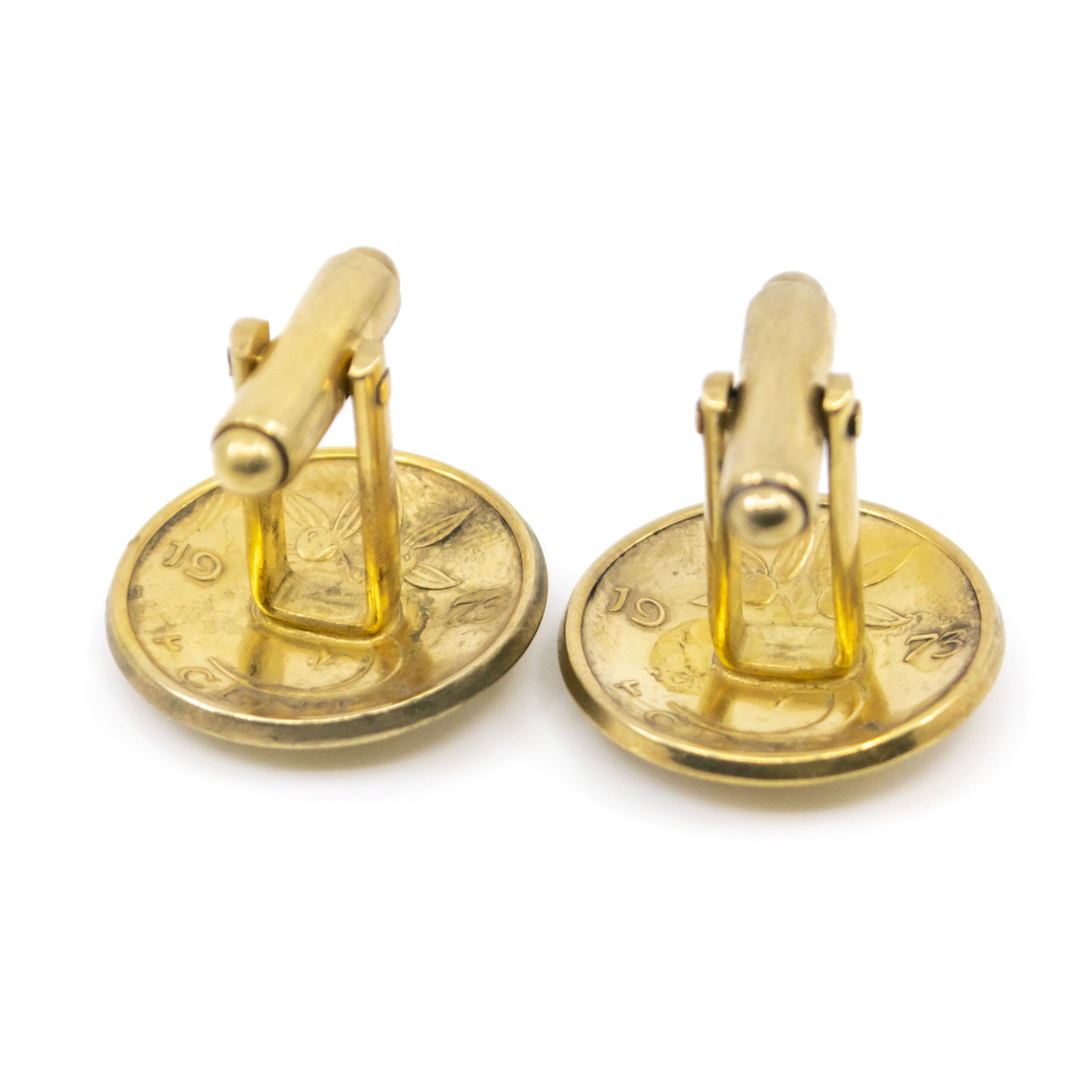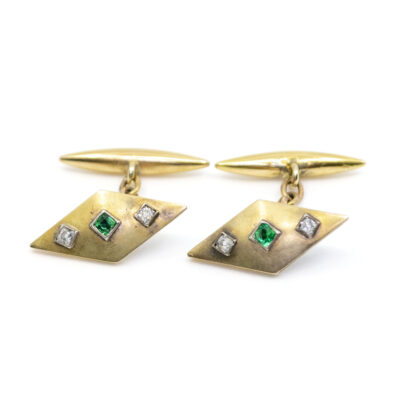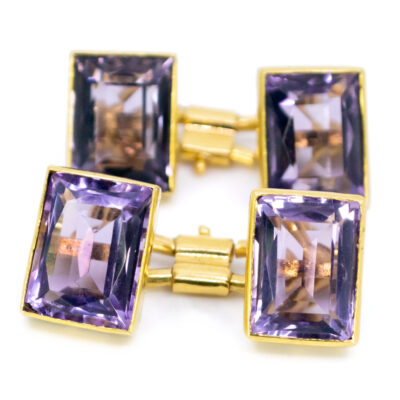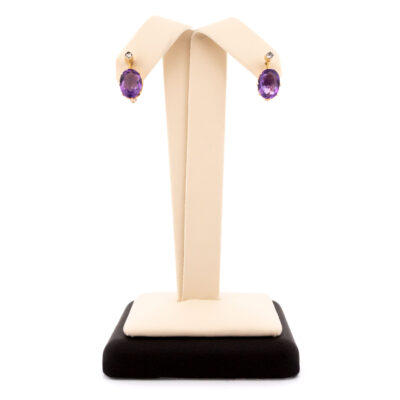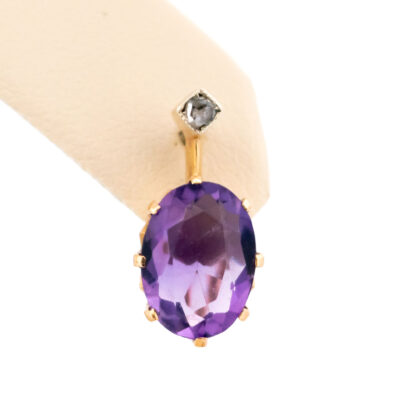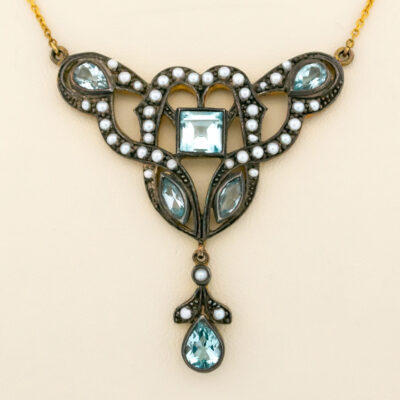These gleaming cufflinks feature authentic 1980 Dutch 5 cent “Stuiver” coins, made of warm bronze and showcasing Queen Juliana in stately relief. A timeless gift to celebrate birthdays, anniversaries, or milestone years from 1950–1980. Choose your special year and wear a piece of history. 🇳🇱
Details: Bronze, Cufflinks.
Design Era: Contemporary.
Dimensions: 21 x21 mm.
Weight in grams: 11.7.
Condition: New.
Shipping and Pickup: This lovely piece ships from our store located in the center of Amsterdam, The Netherlands. We offer both registered shipping and local pickup at our store. In the case of local pickup, any applicable shipping costs will be refunded.
About Us: Add some sparkle to your style with Binenbaum.com. We offer a stunning selection of antique and vintage jewelry that you won’t find anywhere else. From timeless rings and dazzling necklaces to unique brooches, we have something for every taste and occasion. Visit our website today and treat yourself to a piece of history.
| Design Era | |
|---|---|
| Design & Historical Context | Contemporary jewellery is a type of jewellery that reflects current trends and styles, and is often made from a variety of materials beyond the traditional precious metals and stones. This allows contemporary jewellery to have a more modern and unique appearance compared to classic jewellery. To create contemporary jewellery, it is necessary to have both specialized training and a deep understanding of the subject. The contemporary style combines historical techniques and artistic expression with innovative ideas and materials, giving it a distinct personality that falls between fashionable mass-produced jewellery and traditional artisanal works of art. |
| Key Materials | |
| Materials & Craftsmanship | Bronze: The Metal of History and Timeless Craftsmanship Bronze, an alloy primarily composed of copper and tin, is one of the oldest known metals used by humanity, celebrated for its durability, warmth, and timeless appeal. This metal has played a crucial role in history, from the tools and weapons of the Bronze Age to the intricate artworks and jewelry of various ancient civilizations. Historically, bronze has been valued for its strength and resistance to corrosion, making it a preferred material for crafting everything from statues and coins to jewelry and decorative objects. In ancient Greece and Rome, bronze was often used for creating detailed and durable jewelry pieces, as well as for casting statues and other art objects. The warm, rich tones of bronze, ranging from golden-brown to deep green with patina, give it a distinctive and historical aesthetic. In modern jewelry, bronze continues to be appreciated for its earthy, vintage appeal and its versatility. It can be polished to a high shine or allowed to develop a natural patina, which enhances its antique look. Bronze is often used in bold, statement pieces such as cuffs, rings, and pendants, where its weight and durability add a sense of solidity and craftsmanship. It's also popular in mixed-metal designs, pairing beautifully with silver, gold, or gemstones to create contrast and depth. Bronze is more than just a metal; it is a symbol of history, strength, and enduring beauty. Its connection to ancient craftsmanship and its warm, inviting tones make it a meaningful and stylish choice for jewelry that combines tradition with contemporary design. Whether polished or aged, bronze jewelry carries a sense of timelessness and artistry that resonates across the ages. : The Fusion of Luxury and Affordability Silver-gilt, also known as vermeil or gilded silver, is a luxurious yet accessible material that combines the beauty of gold with the affordability of silver. This technique involves coating a base of sterling silver with a thin layer of gold, typically 10k or higher, creating a piece that has the rich, warm appearance of gold while maintaining the strength and durability of silver. Historically, silver-gilt has been used for centuries in the creation of fine jewelry, religious artifacts, and decorative objects. The process of gilding, or applying a gold layer to silver, dates back to ancient times and was especially popular in the Middle Ages and Renaissance periods, where it was used to create elaborate and ornate pieces for royalty and the church. The technique allowed artisans to produce items with the appearance of solid gold at a fraction of the cost. In modern jewelry, silver-gilt is prized for its versatility and elegance. The gold layer provides a luxurious finish that is resistant to tarnish, while the silver base offers durability and a more affordable price point compared to solid gold. Silver-gilt jewelry can range from delicate, minimalist designs to bold, statement pieces, making it suitable for a wide range of styles and occasions. Silver-gilt is often used in rings, necklaces, bracelets, and earrings, where the combination of gold's warmth and silver's strength creates pieces that are both beautiful and long-lasting. The thickness of the gold layer can vary, with vermeil being a specific type of silver-gilt where the gold layer is at least 2.5 microns thick and typically made from higher karat gold. Silver-gilt is more than just a material; it is a blend of luxury and practicality, offering the appearance of gold without the full expense. Its historical significance and enduring appeal make it a popular choice for those who appreciate the beauty of gold and the durability of silver. Whether in classic designs or contemporary pieces, silver-gilt jewelry adds a touch of elegance and sophistication to any collection. |
| Dimensions | 21 x21 mm |
| Gender | |
| Weight (in grams) | 11.7 |
| Condition |
By following these tips, you can enjoy your precious jewelry for many years to come.
Related Products
-
Onyx Silver Bullet Back Cufflinks 11259-6997
€ 235,00 VAT incl. (where applicable) -
Diamond Emerald 18k Chain Link Cufflinks 8302-2021
€ 1.495,00 VAT incl. (where applicable) -
Silver Bullet Back Cufflinks 11241-6985
€ 195,00 VAT incl. (where applicable) -
Silver Bullet Back Cufflinks 11243-6987
€ 195,00 VAT incl. (where applicable) -
Amethyst 18k Breveté Cufflinks 8596-2073
€ 2.295,00 VAT incl. (where applicable) -
Onyx 14k Chain Link Cufflinks 8294-2013
€ 1.195,00 VAT incl. (where applicable) -
Amethyst Diamond 14k Oval-Shape Earrings 13743-2407
€ 1.495,00 VAT incl. (where applicable) -
Topaz Pearl 9k Silver Lavalier Necklace 10223-6515
€ 1.495,00 VAT incl. (where applicable)
- Home
- Collection
- Fine Jewelry
- Silver Jewelry
- Silverware
- Boxes
- Candlesticks
- Salt and pepper shakers
- Miniatures
- Salt cellars
- Spoon Set
- Condiments
- Frames
- Napkin Ring
- Spoon
- Oddities
- Cups
- Vases
- Cutlery
- Serving Spoon And Cake Server
- Candlesticks
- Baskets
- Hanukkiah
- Spice Tower
- Yad
- Tea Set
- Sugar Castor
- Napkin Rings
- Wine Bottle Coaster
- Wine Stopper
- Tea Pot
- Jugs
- Rattles
- Hip Flask
- Miscellaneous
- Rings 💍
- About
- Contact
